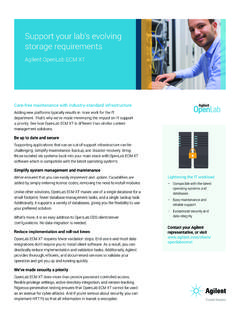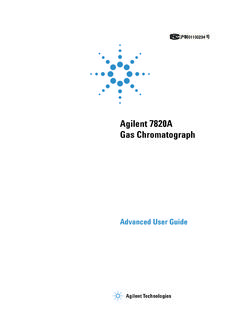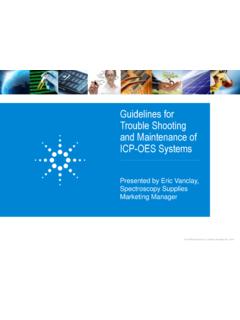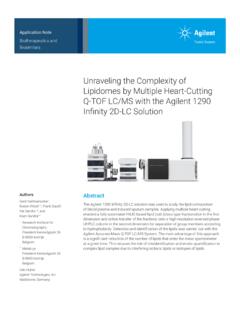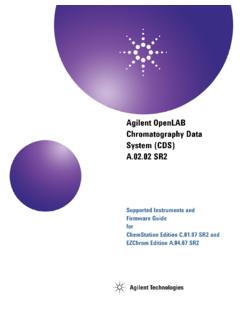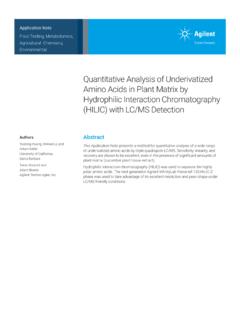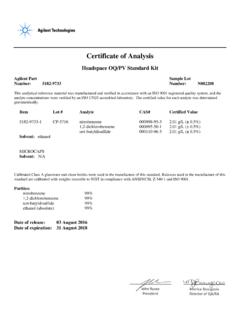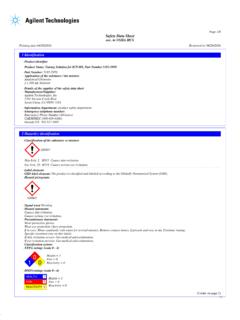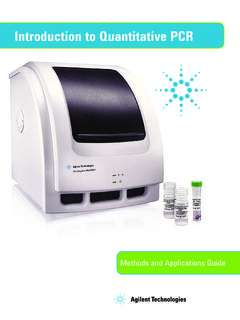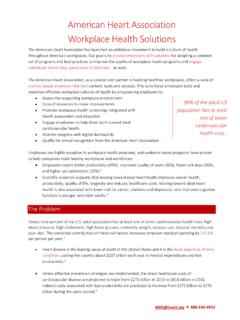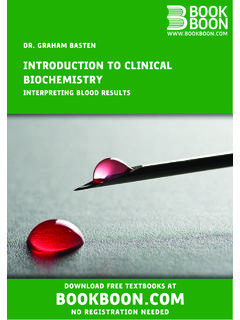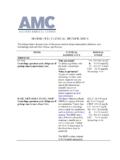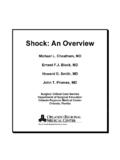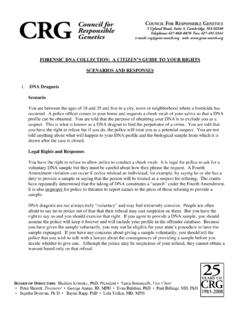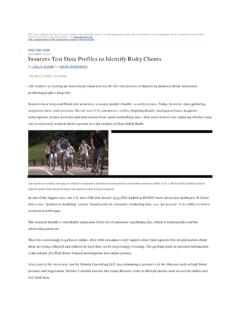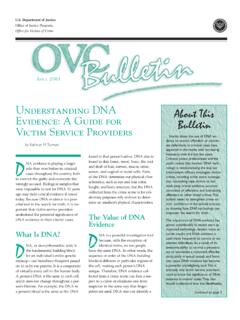Transcription of Discover the Difference in your Data - Agilent
1 Agilent Mass Profiler Professional SoftwareDiscover the Difference in your Data2 Welcome to Agilent Mass Profiler Professional a chemometrics software Package Designed specifically for Mass spectrometry just a single MS experiment can generate megabytes of data , sorting out what s meaningful is like finding a needle in a field of haystacks. Using a combination of advanced processing capabilities and powerful statistical and mathematical models to analyze complex MS data sets, Mass Profiler Professional lets you easily classify, compare, and analyze sample groups.
2 So you can not only find the needle, you can also characterize the , Lc/Ms, ce/Ms and icP-Ms all togetherA robust, stand-alone software solution, Mass Profiler Professional handles many types of processed Agilent mass spectral data , including GC/MS, LC/MS, CE/MS, and ICP-MS. You can even analyze different experiment types in a single project GC/MS and LC/MS, for example. A single, consistent user interface supports all data types to reduce training time, minimize operator errors and significantly increase your laboratory s MASS PROFILER PROFESSIONAL SOFTWAREthe fastest, easiest Way to eXPLore reLationshiPs in coMPLeX Mass sPectraL Datafind the relationship you re Looking forMass Profiler Professional integrates smoothly with Agilent MassHunter Workstation, as well as Agilent OpenLAB ChemStation, and is ideal for any MS-based application where you need to determine relationships among sample groups and variables.
3 Including: Metabolomics Proteomics Forensics Toxicology Food safety Environmental Petrochemical Biofuels3 Guided workflows simplify your data analysis tasks. All of the analysis tools are wizard-based, with well-chosen default parameters that also offer easily customized settings to give you maximum flexibility in your for the expert user, there is an advanced workflow that guides you through the data import and then gives you all the functionality you could ask for including comprehensive analysis and visualization features based on the different filtering, normalization, and standard statistical methods.
4 All of the analysis tools are wizard-based, with well-chosen default parameters that also offer easily customized settings to give you maximum flexibility in your Profiler Professional was designed for mass spectrometry data . So even though you re using a very powerful statistical package, you ll find navigation easy and intuitive. Using a guided workflow with predefined steps based on the data type and your knowledge of the experimental conditions, a first-time user can quickly perform a basic analysis a unique feature of Mass Profiler Professional lets you easily remine data sets, based on preliminary data , to improve the quality of statistical analysis results.
5 It s also easy to export an inclusion list for Q-TOF MS/MS analysis and re-import the results into Mass Profiler Don t have to be a statistician to Get excellent results4100200-20-40-40-30-20-10010200-2 0-40-100-200Y-AxisZ-AxisX-Axis-40-30-20- 100100100-100-2000 ControlNavy BeanRed BeanWhite Beanthe Way to a DeePer unDerstanDinG of your DataMass Profiler Professional s powerful analytical capabilities fully exploit the high information content of mass spectrometry data . With functionality for unsupervised (classification without prior group assignments) or supervised (using preclassified groups) analysis, the software lets you.
6 Quickly and easily Discover differences between sample groups Plot changing patterns of compound abundances over time Develop useful multivariate models for class predictionAdvanced visualization tools let you inspect and annotate your results in new ways giving you the ability to interact more productively with your data and turn it into component analysis (Pca) of metabolite data from biological replicate samples shows differences between a rat chow diet supplemented with red, white, or navy the important chemical differences in your DataComplex chemical samples and their observable physical manifestations are the result of abundance relationships between the different chemical components.
7 This phenomenon can be explored by comparing sample abundance profiles, typically using Principal Component Analysis (PCA), a mathematical method of compressing complex data into a few is used in an unsupervised fashion to find differences between sample groups, to determine group associations, and to weigh relative contributions of compounds to the separation of the groups. Mass Profiler Professional also contains a Find Minimal Masses algorithm designed to find the most important compounds that explain the differences between sample (Fold change)-log10(correctedPvalue) -4 -2 0 2 41086420 Determining significant abundance differences of compounds across GroupsIs the data you re observing statistically valid, or are you looking at the result of normal variation among samples?
8 Student t-tests and Analysis of Variance (ANOVA) tests can help you answer that question by finding entities with differential abundance between two or more sets of experimental find these entities of interest in a statistically rigorous fashion, Mass Profiler Professional provides a broad set of tests that include:Student t-tests and Analysis of Variance (ANOVA) tests Paired and unpaired t-test Paired and unpaired Mann-Whitneyvolcano Plot functionality lets you simultaneously calculate the fold-change in abundance for each mass entity as well as p-value significance.
9 You can interactively change both p-value and fold-change settings and view the results in graphical as well as table p-value (pH)808 entitiesCorrected p-value (SLO)17 entitiesCorrected p-value (pH-SLO)161 entities6904470104103venn diagram showing the union of two-way anova. In this experiment, the contribution of two variables, pH and Streptolysin O (SLO), is shown for metabolites extracted from malaria infected red blood cells. Projecting the results of two-way ANOVA onto a Venn diagram clearly shows the statistically meaningful contributions of each variable.
10 ANOVA: equal and unequal variance Kruskal Wallis non-parametric one-way ANOVA Friedman non-parametric two-way ANOVA Repeated Measures ANOVAN-way ANOVA Family-wise error rate and false discovery rate Multiple testing corrections Post-hoc tests - Tukey - Student-Newman-Keulsvisualizing differences By fold-change analysisSmall sample groups and undersampled data sets can result in p-values of questionable statistical validity. In such cases, you can use the fold-change setting as a filter to look for differences between two groups and to assess the significance of those differences based on your knowledge of the data groups mass entities based on the similarity of their abundance profiles, allowing you to uncover the most prominent patterns in the analysis by entity profiles across samples classifies compounds that have K-means cluster analysis partitions entities into a fixed number (k)
